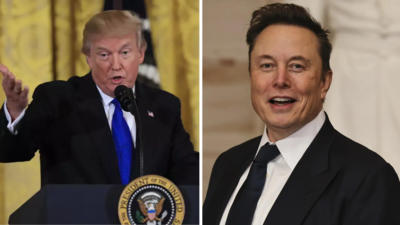The Trump administration is pursuing an unprecedented effort to reshape American education, proposing to defund—and potentially dismantle—the US Department of Education. The initiative, championed by figures like Elon Musk, is part of a broader push to curb federal oversight and shift control to state and local governments. Proponents argue that decentralization will foster innovation and efficiency, while critics warn of deep and lasting consequences for students nationwide. As the debate intensifies, the future of federal education policy hangs in the balance.
Plans for downsizing and defunding the Department
The Trump administration’s proposed plan involves significant changes to the Department of Education’s structure, including potential executive orders aimed at removing key functions and redistributing them to other federal agencies. Reports from US media houses indicate that crucial operations, such as federal student loan management and the oversight of special education programs, could be shifted to departments like the Treasury or Health and Human Services. Even more drastic is the development of a legislative proposal to completely abolish the department, a move that would require congressional approval.
Currently, the department administers a staggering $1.6 trillion in federal student loan debt and allocates funds through programs like Title I according to NPR, an American broadcasting organisation. With an annual budget of $79 billion and a workforce of approximately 4,400 employees, it is a significant player in the realm of national education policy according to NPR reports. However, the administration contends that the department is mired in bureaucracy, hindering progress and that a more localized, state-driven approach would better serve students.
Workforce reductions and administrative shifts
As part of the larger restructuring effort, the Trump administration has already begun reducing the department’s workforce. Reports from US media houses have surfaced that dozens of employees have been placed on paid administrative leave, with little to no explanation provided. This action has sparked concerns that the reduction disproportionately affects employees in DoE. Collectively, the news has caused unease among department staff and is expected to be a topic of discussion during the Senate confirmation hearing for Trump’s education secretary nominee, Linda McMahon. However, the date for the hearing has not been set.
Legislative and political challenges
While the administration’s vision for an education system without a federal oversight body is bold, it faces significant hurdles. The Department of Education was established through an act of Congress, meaning that its dissolution cannot be achieved through executive orders alone. Past Republican efforts to eliminate the department have failed, and with Congress currently divided, securing the necessary votes for such a sweeping change remains uncertain.
Even without congressional approval, the Trump administration may still enact major policy shifts through executive orders. For instance, the potential relocation of the Federal Student Aid office to the Treasury Department would significantly reduce the department’s control over student loan programs. These proposed actions are likely to face legal challenges and vehement opposition from educators and advocacy groups who argue that they would undermine the protection of civil rights in education.
Will dismantling the DoE improve US literacy rates?
One of the primary motives behind dismantling the Department of Education is the belief that such a move could improve literacy rates across the nation. Vivek Ramaswamy, who leads the Department of Government Efficiency (DOGE) alongside Musk, recently highlighted concerns about the country’s declining reading proficiency, citing data from 2022 which showed that only 31% of eighth graders were proficient in reading. Supporters of the proposal argue that removing federal oversight would allow for more tailored and efficient educational practices. However, critics warn that such a move could disrupt funding streams and compromise civil rights protections for vulnerable student populations.
Implications for Federal Education Policy
The potential downsizing or dissolution of the Department of Education would represent a paradigm shift in the way US education policy is formulated and managed. Proponents assert that reducing the department’s role would allow for greater local control and reduce bureaucratic inefficiencies. On the other hand, critics argue that the absence of federal oversight could exacerbate educational inequalities, particularly for low-income and special-needs students who rely on federal support.
As the administration continues to push forward with its plans, the fate of the Department of Education remains uncertain. Legal battles, political resistance, and public opposition are likely to shape the outcome in the coming months. Whether the department will be restructured, defunded, or entirely dismantled, the future of US education policy hangs in the balance.
